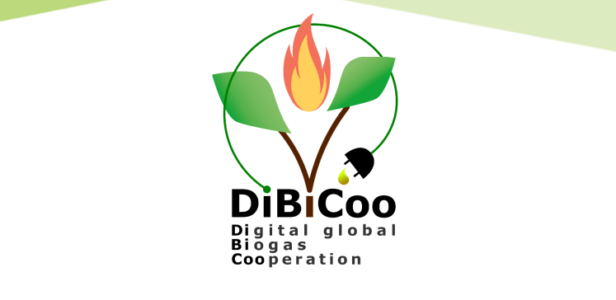Executive Summary
Republic of Argentina
In Argentina, the biogas market has gained a solid foothold over the last five years and is massively industrial. However, its growth is slowing down. In 2015, Argentina has developed 100 biogas plants and has grown exponentially until 2020 through the RenovAr Programme. In 2015, INTA and PROBIOMASA have conducted a survey assessing 80 of the 100 plants built nationwide. INTA and PROBIOMASA have found that from the 80 plants surveyed, 76 of the 80 biogas plants developed up until 2015 were installed for environmental purposes, while 11 of the 80 biogas plants surveyed were utilised for energy development, consisting of large
bio-digestion plants (1MW-2MW), consisting mostly of covered lagoon and mixed technologies utilising digesters, double membrane reactor, and a co-generation unit i.e. combined heat and power (CHP). It must be noted that at that time biogas was not widely used as a source of energy, rather, it was used for environmental purposes. The relatively slow growth of the biogas market until 2015 is also indicated by the low rate of biogas utilisation for the means of energy security. It is also worth highlighting that the dominating feedstock utilised for biogas in Argentina is industrial waste, followed by organic waste and virgin biomass.
To accelerate the growth of the biogas market, Argentina has been implementing governmentled programs. The most notable program is the series of RenovAr programs i.e. round 1, round 1.5, and round 2) that was started from 2016 and continues until today with RenovAr 3 being implemented in August 2019. According to the World Bank IFC, RenovAR has succeeded in reaching 2.4 GW capacity of combined renewable energy alternatives in the end of 2016 and 4.4 GW of renewable energy projects in August 2017. The tenders foresee a minimum of 0.5 MW and a maximum of 10 MW of electricity capacity from each biogas project to achieve the overall goal. All in all, this program and national goal shows that biogas is seen as an important renewable energy alternative in Argentina.
Republic of Ethiopia
This report provides a thorough and in-depth elaboration of Ethiopia’s biogas market, which despite of its potential currently remains at its early stage especially when compared to other RE resources. Biogas project implementation in Ethiopia is dominated by public-led investments and is far less funded by the private sector. This has, to some extent, attenuated the popularity and the advancement of existing biogas technologies. Furthermore, renewable energy (RE) governmental policies in Ethiopia are mainly directed towards investments into Hydropower, Solar, Wind and Geothermal energy production. In addition, in Ethiopia biogas is primarily used to fulfill energy demands in rural communities. Because of this, the biogas market also faces geographical challenges, due to being scattered across the country—mostly in rural areas.
Republic of Ghana
Ghana’s main power supply sources are from hydroelectricity, thermal fueled by crude oil, natural gas, and diesel, and solar. Ghana also exports power to Togo, Benin, and Burkina Faso. On-going grid expansions would allow further exports to other neighbouring countries in the sub-region. Ghana has a vibrant power generation terrain with players from both the public and private sectors. Reforms in the Power Sector in the 1980’s gradually removed barriers and created a level playing field for the participation of independent power producers (IPPs) in an area which hitherto had only public sector participants. The total installed capacity for existing power plants in Ghana is 4,132MW consisting of hydro 38%, thermal 61% and solar contributing less than 1% (Agyenim et al., 2020). The electricity sector in Ghana is commercialised with extensive private sector involvement. This electricity market structure is also supported by the Feed-in Tariff (FIT) Scheme for renewables such as Solar PV and wind, with net metering facility which enables the private sector to supply electricity into the main grid, further explanation of support mechanisms for private companies producing electricity can be seen in Ghana Section 4.3.2. Although market mechanisms are in place and are effectively in effect for renewables such as solar PV and wind, the biogas sector is still struggling. Biogas technology is not actively used for large-scale power generation, but it is used in smaller scale installations mainly for sanitation purposes—this is due to several challenges including inadequate feedstock and poor maintenance. Policies currently in place such as the 2018 Energy Outlook of Ghana also insufficiently referred to biogas (See Ghana’s Section 4.1.1).
Republic of Indonesia
This report will also provide an insight into Indonesia’s biogas market. The analysis will be more heavily conducted on the specific segment of the biogas market i.e. the palm oil sector as the sector with the most biogas feedstock potential in the national biogas market. However, elaborations on other potential sectors such as municipal solid waste, agriculture waste, etc. were also included in the report.
Republic of South Africa
The Republic of South Africa (RSA) section of the report will provide a thorough assessment of South Africa’s biogas market which in its current state relies heavily on the economic viability and bankability of projects. In which, bankability of project depends on its revenue streams influenced by feedstock security. Furthermore, other factors such as the influence of existing regulatory environment of the country, and the project stakeholder’s need to understand and follow viable project models are key aspects to ensure the bankability of projects. Historically, the biogas market in RSA has a low rate of uptake, and the current nascent state of the market makes the development of local expertise coupled with higher uptake of biogas technology key aspects for a commercially sustainable biogas industry. In terms of structure of the electricity sector, the feed-in-tariffs mechanism is in place for IPPs. In which, the IPPs compete on price tariff (70%) to be charged to Eskom and economic development contributions (30%) to local communities within 50km radius from project location. Preferred bidders sell power to single buyer Eskom (RSA’s national power utility company), over the 20-year PPA.
To read the full report click the download button:
